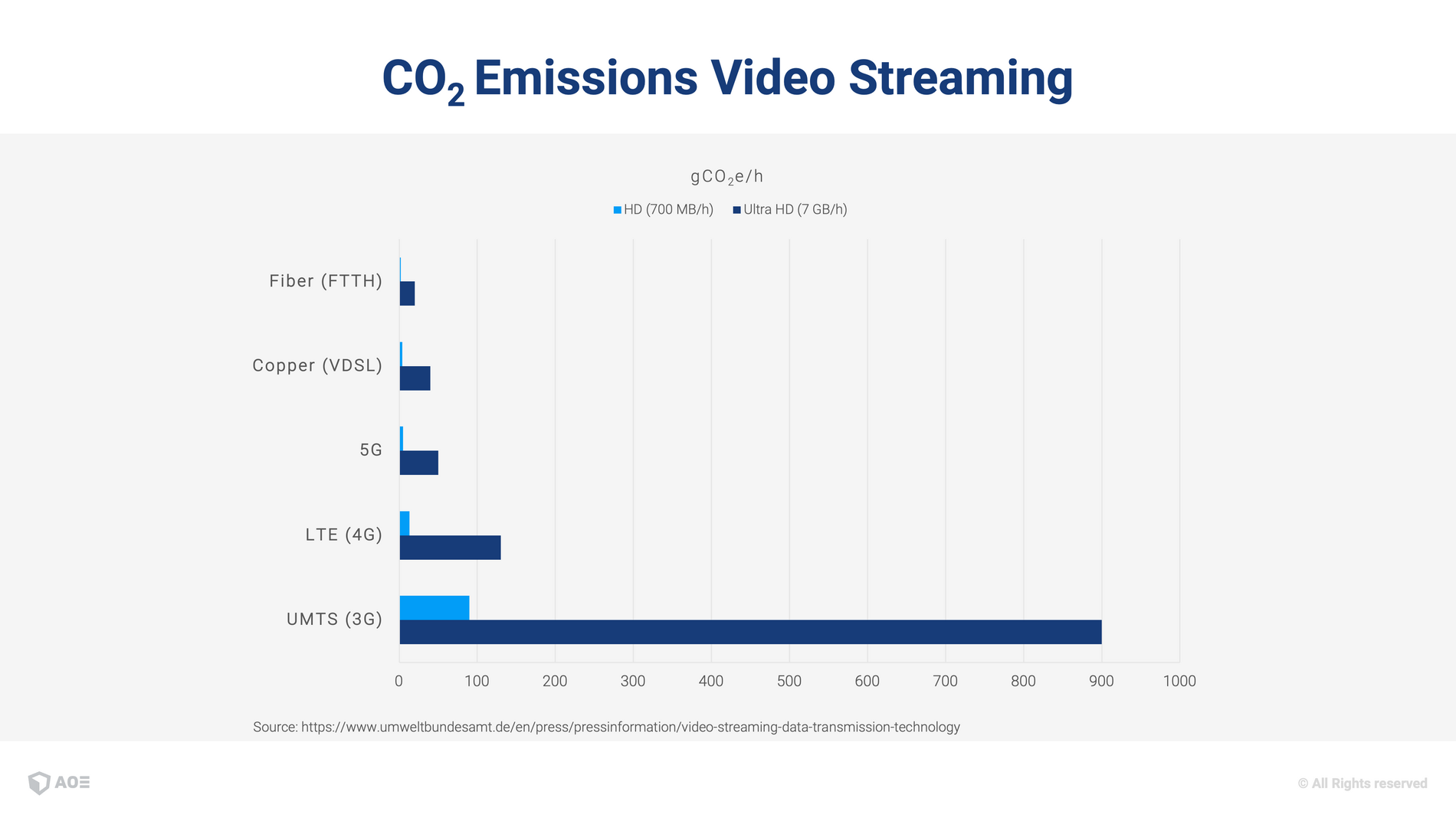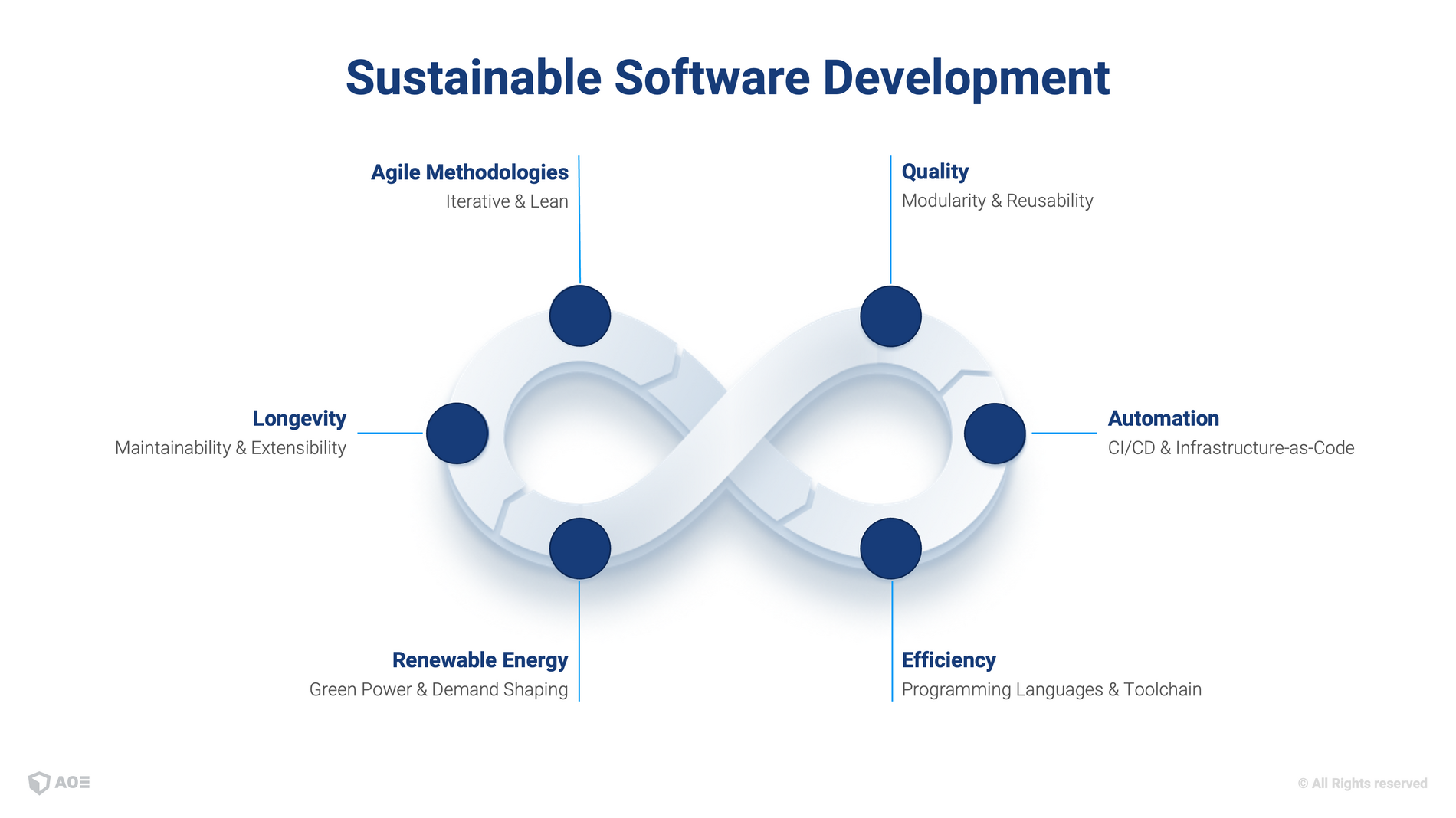Get in touch
The share of emissions due to digitalization is increasing. Even in 2018, in Frankfurt data centers accounted for 1.3 terawatt hours, or approximately 20% of electricity consumption in the city. At the same time, awareness of the significance – and the necessity – of sustainability is also increasing. Frequently, however, “more sustainable” in the digitalization context is understood in the sense of damage control: Eco electricity and CO2 compensation by planting trees. One example: Cloud computing provider AWS wants to have converted entirely to renewable energies by 2025 and be climate-neutral by 2040. Precisely for companies that consume a lot of energy performing their core activities, for example, by operating big server farms, such a net-zero policy makes good sense. At the same time, one must ask the question: Is being climate-neutral by 2040 really the best that we can do?
Measures such as planting trees make an important contribution to climate protection, but they’re starting very late, namely only once the negative consequence, in this case CO2 emissions, has already happened. Anyone who meets their own consumption demands with eco electricity and compensates for the emissions generated is essentially assuming that nothing can be done about the scope of energy consumption. But what would happen if we examined the situation earlier and tried to act as energy-efficiently as possible in general?
For software providers and developers, this raises the question of: How Green IT might look. Where does software development offer opportunities for greater sustainability – and what deserves special attention in the process?
To assess the sustainability of software, the following factors must be incorporated, for example:
Important is to examine the process end-to-end if possible – from the server to the end customer’s end user device.
If companies use their own data centers and maintain capacities for special events there, for Black Friday or Christmas, for example, this consumes unnecessary energy throughout the year, for the basic consumption of unused servers is relatively high. Unfortunately, this is still common practice. Cloud computing with optimized utilization presents a more efficient alternative to on-premise servers: Thanks to load-independent autoscaling, resources can be allocated or released as needed, in order to save energy (and reduce costs) and reduce CO2 emissions.
Transmission also offers savings potential: In mobile communications, 4G (LTE) represented enormous energy savings as compared to 3G (UTMS); now 5G is almost as efficient as copper cable. Even for landline transmission, there are significant differences in energy consumption: Here, FFTH is clearly the most efficient access technology, especially as compared to classic ADSL.

If you consider that streaming makes up a majority of worldwide internet traffic, the question of resolution also becomes relevant: For in 4K, transmission requires approximately twice as much energy as in HD; on mobile end user devices, the difference is often not even visually perceptible. This is a simple lever for consciously saving energy (for unfortunately, providers often play back in the maximum possible resolution by default).

Of course, software providers and developers cannot influence all these factors. Nevertheless, with the selection of tools, services, and service providers, and even during development, they can do a lot more for sustainability.

If processes and applications become more efficient, this not only saves energy, but also time. From an economic perspective, of course this induces people to invest these savings in new workloads. Development thus becomes ever more efficient; however, no energy is saved in the end – a rebound effect. So, sustainability can also mean consciously avoiding maximum growth and maximum efficiency.
Now of course sustainability should not be equated with minimizing energy consumption – many additional factors play a role here. Worthy of mention are, for example, the raw materials used, working conditions for the manufacturing of digital end user devices, and the resulting electronic scrap. Today it is impossible to check a product or service comprehensively end-to-end for its sustainability.
The fact is that digitalization brings enormous advantages and a great deal of potential with regard to sustainability, but it also has its price. Therefore, it is worthwhile as a developer or software company to examine processes, tools, and ways of working in detail and to take the small opportunities for “greener coding” where they exist. And surely planting a few trees regularly can’t hurt either.
This article by Stefan Rotsch first appeared on ComputerWeekly.de (in German). We appreciate your feedback and sharing the article.